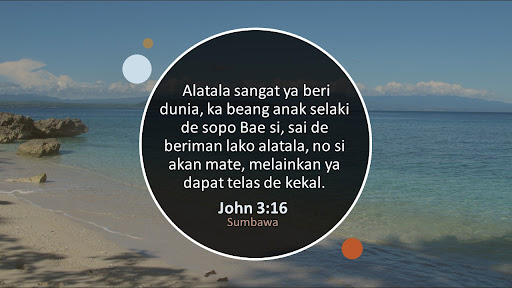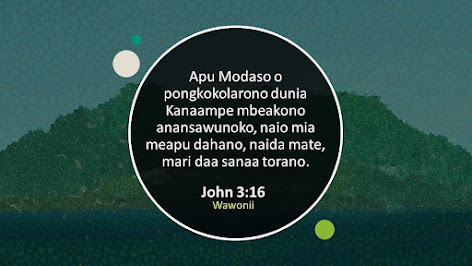John 3:16 in Sumbawa

John 3:16 - Sumbawa Alatala sangat ya beri dunia, ka beang anak selaki de sopo Bae si, sai de beriman lako alatala, no si akan mate, melainkan ya dapat telas de kekal. This language is also known as Bahasa Sumbawa, Sumbawarese Sumbawa, Bible, Bahasa Sumbawa, Sumbawarese, Basa Semawa, Bima, Sumbawa Island, Bali, Lombok, Sprachbund, Satera Jontal, Indonesia, John 3:16, SEO: Sumbawa ( basa Semawa ; Indonesian : bahasa Sumbawa ) or Sumbawarese is a Malayo-Polynesian language of the western half of Sumbawa Island, Indonesia , which it shares with speakers of Bima . It is closely related to the languages of adjacent Lombok and Bali ; indeed, it is the easternmost Austronesian language in the south of Indonesia that is not part of the Central Malayo-Polynesian Sprachbund . The Sumbawa write their language with their own native script commonly known in their homeland as Satera Jon...




